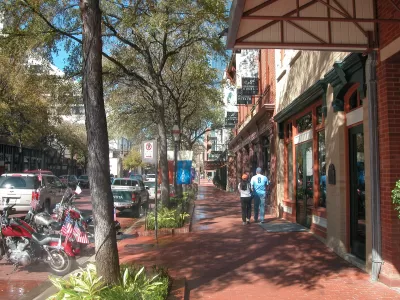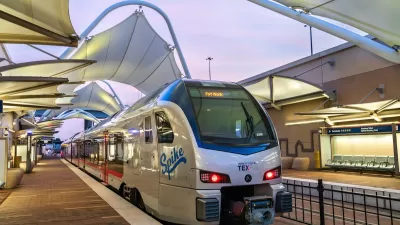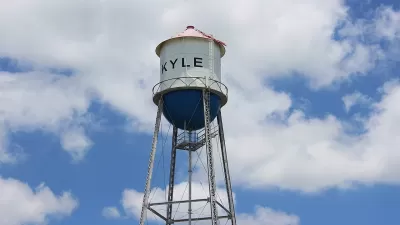The Texas city is the largest municipality so far to sign onto the Blue Zones Project, an initiative for improving longevity. In a nutshell, Blue Zones wants to make healthy choices the easy ones.

Recently adopted in Fort Worth, the Blue Zones Project "aims to 'reverse-engineer longevity' into a community by promoting a number of principles gleaned from National Geographic explorer Dan Buettner's observations of healthy and long-lived communities around the globe."
Inspired by Buettner's findings from five places where people tend to live to age 100, Blue Zones encourages movement toward a "tipping point" where healthy becomes the default choice. Fort Worth "needs to get 111,000 people 15 and older to sign the personal pledge, 25 percent of schools, and enough employers to represent 85,000 employees."
Program coordinators emphasize that the project isn't about making people do anything. Instead, Blue Zones seeks healthy infrastructure improvements where possible, including changes to the built environment favoring walkability, healthy eating, and physical movement.
In conjunction with this effort, Fort Worth "has introduced WalkFW, a pedestrian transportation plan, and a new bicycle and pedestrian advisory committee is working on improvements to a 2010 cycling plan. The city is also working on a complete streets program as well as considering a program that would let vendors take produce carts into food deserts."
FULL STORY: City of Fort Worth Hopes to Get People Walking Till They’re 100

Trump Administration Could Effectively End Housing Voucher Program
Federal officials are eyeing major cuts to the Section 8 program that helps millions of low-income households pay rent.

Planetizen Federal Action Tracker
A weekly monitor of how Trump’s orders and actions are impacting planners and planning in America.

Ken Jennings Launches Transit Web Series
The Jeopardy champ wants you to ride public transit.

Washington Legislature Passes Rent Increase Cap
A bill that caps rent increases at 7 percent plus inflation is headed to the governor’s desk.

From Planning to Action: How LA County Is Rethinking Climate Resilience
Chief Sustainability Officer Rita Kampalath outlines the County’s shift from planning to implementation in its climate resilience efforts, emphasizing cross-departmental coordination, updated recovery strategies, and the need for flexible funding.

New Mexico Aging Department Commits to Helping Seniors Age ‘In Place’ and ‘Autonomously’ in New Draft Plan
As New Mexico’s population of seniors continues to grow, the state’s aging department is proposing expanded initiatives to help seniors maintain their autonomy while also supporting family caregivers.
Urban Design for Planners 1: Software Tools
This six-course series explores essential urban design concepts using open source software and equips planners with the tools they need to participate fully in the urban design process.
Planning for Universal Design
Learn the tools for implementing Universal Design in planning regulations.
Heyer Gruel & Associates PA
Ada County Highway District
Institute for Housing and Urban Development Studies (IHS)
City of Grandview
Harvard GSD Executive Education
Toledo-Lucas County Plan Commissions
Salt Lake City
NYU Wagner Graduate School of Public Service





























